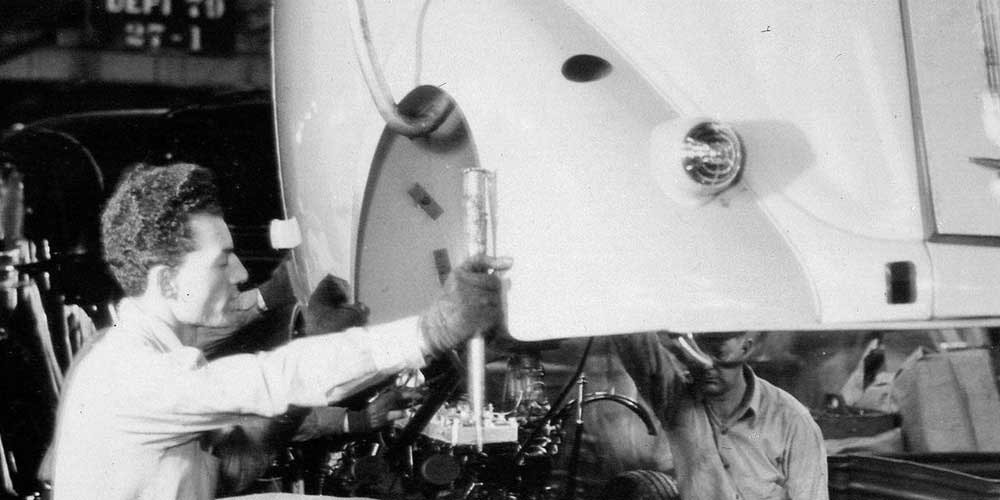By Robert Tate, Automotive Historian and Researcher
Images courtesy of the National Automotive History Collection
Posted: 08.01.2016
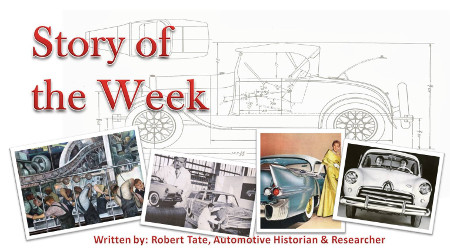
Looking back at the early days of the automobile culture and heritage you will find that there were so many name plates and so many companies it’s hard to focus on just one brand.
From 1911 to 1929 the automobile manufacturers had introduced so many great looking vehicles that it would take a lot more space to highlight that information in this featured story and to talk about the early days of automotive history and manufacturing.
The first automobile company in Michigan was incorporated in 1897 with $50,000, it was called the Olds Motor Vehicle Company and founded by industry giant, Ransom Eli Olds. In May 1899, the Olds Motor Vehicle Company combined with the Gasoline Engine works as the Olds Motor Works and it was Mr. Samuel Latta Smith, who was the new officer in charge of the company during that time. This was after Henry Ford had constructed his first automobile, the Quadricycle, in 1896.
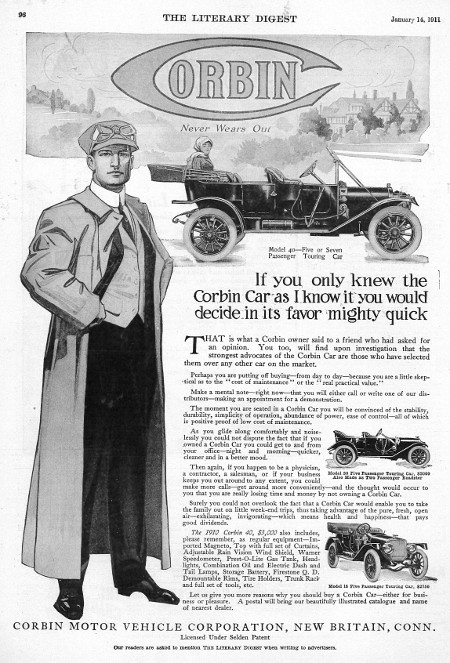
So let’s go back in time and start with the Corbin automobile which was a vehicle that was manufactured from 1905-1912. The automobile was manufactured by the Corbin Motor vehicle Company which was owned by the American Hard Ware Corporation in Britain, Connecticut. The 1911 Corbin model which was a 4-cylinder model called the Model 30 Roadster was admired by many for its great style and engineering features. The Corbin model had enjoyed great commercial success and offered great performances for the consumer market.
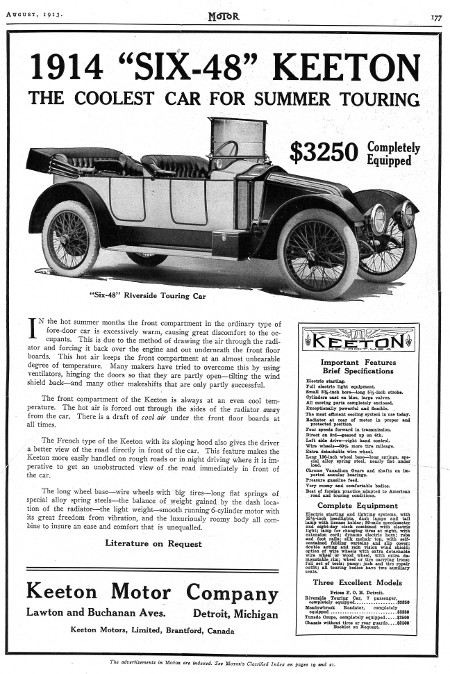
The 1914 Six-48 Keeton automobile was manufactured in Detroit, Michigan. The model was produced and manufactured from 1912-1914 with a sloping hood designed which created a stir in the consumer market.
The model was manufactured by Forrest M. Keeton. Advertising campaigns at the time said that the 1914 Keeton model was “the coolest car for summer touring.”
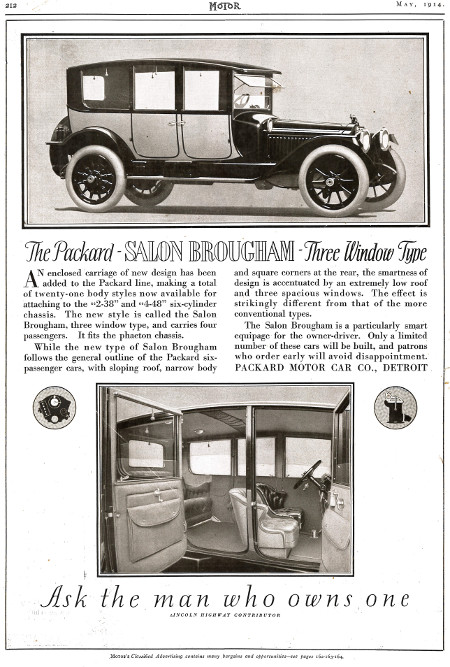
One of the most important name plates in our automotive history was Packard. The slogan “Ask the man who owns one,” was a very popular advertising theme for the Packard automobiles. This story features images of the beautiful Packard Salon Brougham, three-window type vehicles which were truly intriguing and unique designs.
The cost for the Packard Salon Brougham model was $4,950 which was a lot of money during that time and the car could carry four passengers. During 1913-1914, Packard automobiles were manufactured in Detroit, Michigan. Packards were made to be prestigious and the Salon Brougham was no exception. It remains a highly sought after vehicle by Packard collectors today.
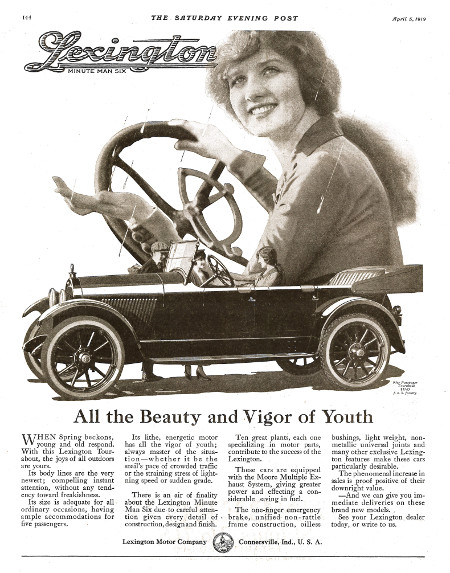
The Lexington Minute Man Six is a vehicle that you rarely hear about from other automotive historians. The models were manufactured by the Lexington Motor Car Company which was founded in 1909 in Connersville, Ind.. The Lexington vehicles were popular cars which were available in a variety of four and six-cylinder models.
The Lexington Motor Car Co. received a marketing boost in 1920 because they placed first and second in the famous “Pikes Peak Hill Climb.” The Lexington Minute Man model series was introduced during the 1919 -1920’s as a great looking vehicle which had become a practical automobile for consumer needs.
On May 23, 1927, Lexington was taken over by Auburn Automobile Co. Auburn’s new president, Errett Lobban “E.L.” Cord, had promptly phased out the Lexington automobile model which unfortunately eliminated what was a great and stylish vehicle.

Despite the stock market crash of 1929 which ushered in the Great Depression, the Jordan Motor Car Co. announced three car models ranging in prices from $1,795 to $ 2,795. One great looking example of their automobiles was the Jordan Playboy which was an outstanding feat of style and engineering. The Jordan Playboy was marketed toward the luxury consumer for those who were looking for some driving excitement and intrigue.
Founded by Ned Jordan, the Jordan Motor Car Co. was located in Cleveland, Ohio and made cars from 1917-1931. The company made marketing history with its groundbreaking advertising campaign, “Somewhere West of Laramie.”
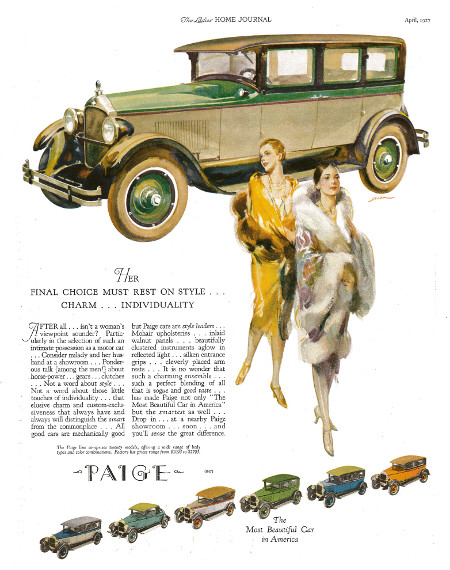
Dubbed as the “Most beautiful car in America,” the 1927 Paige is another great example of a magnificent but lost automobile. The last production models from the Graham-Paige company were released in 1932. The Paige manufacturing plant was also located in Detroit, Michigan. The models were assembled with real craftsmanship throughout its design from the chassis to the body. The Paige automobile really was a great looking vehicle.
The 1927 Paige models offered many great mechanical changes and new and brighter colors to attract more women buyers to their market. Unfortunately, 1932 would be their last year of production.
In conclusion, looking at the early name plates of our rich automotive history goes to show how many auto manufacturers were in production in the early 20th Century. These early manufacturers will be a part of our automotive heritage and culture for many future generations to come.
Gillette, L.S Gillette: “Paige Announces Straightaway Eight,” National Shows Issue January 6, 1927; Auto Industries July6, 1929; Holls, Dave & Lamm, Michael: “A Century of Automobile style 100 years of American car Design.”
A special thanks to Robert Tate, Automotive Historian and Researcher, for contributing this story to the MotorCities Story of the Week Program.
For further information on photos please visit http://www.detroitpubliclibrary.org/ or email This email address is being protected from spambots. You need JavaScript enabled to view it.. Please do not republish the story and/or photographs without permission of MotorCities National Heritage Area. (Bibliography: Hurley, John. De Soto News Releases Auto Show Editions 1958; Chrysler Corporation 1958 annual report; Butler, Don. “The Plymouth and De Soto story,” Crestline Publishing 1978.)


